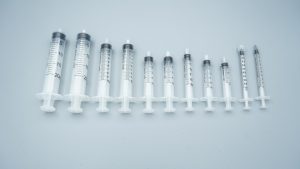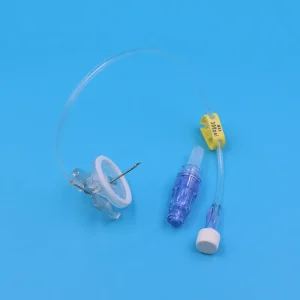In modern healthcare systems, injection is one of the most basic and frequent medical procedures. However, the use of traditional syringes has long posed risks of cross-infection and serious occupational safety hazards for healthcare workers. With the continuous advancement of medical technology and enhanced safety awareness, the emergence of disposable safety syringes has provided crucial technological support for addressing these issues. This article will explore in depth the important role of disposable safety syringes in modern healthcare safety systems and their development prospects.
Needlestick Injuries: A Severe Challenge Facing Healthcare Workers Globally
Definition and Harm of Needlestick Injuries
Needlestick injuries refer to accidental injuries that cause bleeding from deep skin punctures by various medical sharps such as syringes, puncture needles, and suture needles. These seemingly simple accidents actually hide enormous health risks. Currently, at least 20 different pathogens are known to be transmissible through needlestick injuries, including serious infectious diseases such as Hepatitis B virus (HBV), Hepatitis C virus (HCV), and Human Immunodeficiency Virus (HIV).
Global Status of Needlestick Injury Occurrence
According to the latest research data, the incidence rate of needlestick injuries among healthcare workers globally during their careers is as high as 56.2%, while the incidence rate in the past year also reached 32.4%. More concerning is that compared to developed countries, developing countries have a higher overall incidence rate of needlestick injuries (57% vs 54.6%), indicating that healthcare workers in regions with relatively limited medical resources face greater occupational risks.
Among nursing staff, this problem is particularly prominent. According to monitoring results from the Centers for Disease Control and Prevention (CDC), nursing staff account for 80% of needlestick injury victims, while nurses represent 67.2% of all needlestick injury incidents. This data fully demonstrates the serious threat that needlestick injuries pose to the nursing workforce.
Hidden Costs of Needlestick Injuries
Needlestick injuries not only directly threaten the physical health of healthcare workers but also bring enormous economic and psychological burdens. After each needlestick injury incident, healthcare workers need to undergo a series of examinations and preventive treatments, including blood tests, vaccinations, and prophylactic medication, all of which generate considerable direct medical costs.
More importantly, the psychological trauma caused by needlestick injuries to healthcare workers is often overlooked. Psychological issues such as fear, anxiety, and increased work stress can long-term affect healthcare workers’ job performance and quality of life, indirectly impacting the quality of medical services.

Concept and Standards of Safe Injection
Definition of Safe Injection
Safe injection refers to injection methods that are harmless to the recipient, pose no avoidable danger to healthcare workers performing the injection, and whose waste materials cause no harm to society. This definition clearly states that safe injection must simultaneously protect the safety of patients, healthcare workers, and the social environment at three levels.
Core Elements of Safe Injection
- Patient Safety: Ensuring sterility of injection equipment to prevent cross-infection
- Healthcare Worker Safety: Preventing occupational exposure risks such as needlestick injuries
- Environmental Safety: Safe disposal of medical waste to prevent secondary contamination
Technical Characteristics of Disposable Safety Syringes
Design Principles
The core design concept of disposable safety syringes is to automatically or manually activate safety protection mechanisms after injection completion through structural innovation, completely enclosing or retracting the needle to prevent accidental needlestick injuries.
Main Technical Types
- Needle Retraction Type: The needle automatically retracts inside the syringe after injection completion
- Sheath Protection Type: The needle is covered by a sheath through sliding or pressing mechanisms
- Needle Blunting Type: The needle tip is blunted after injection, losing its penetrating ability
- Integrated Destruction Type: The entire syringe cannot be reused after use
Technical Advantages
- Active Protection: Provides protection automatically without relying on user safety awareness
- Ease of Use: Operation method is essentially the same as traditional syringes, with low learning costs
- Prevention of Reuse: Effectively prevents syringe reuse and cross-infection
- Safe Waste Disposal: Reduces risks during medical waste processing
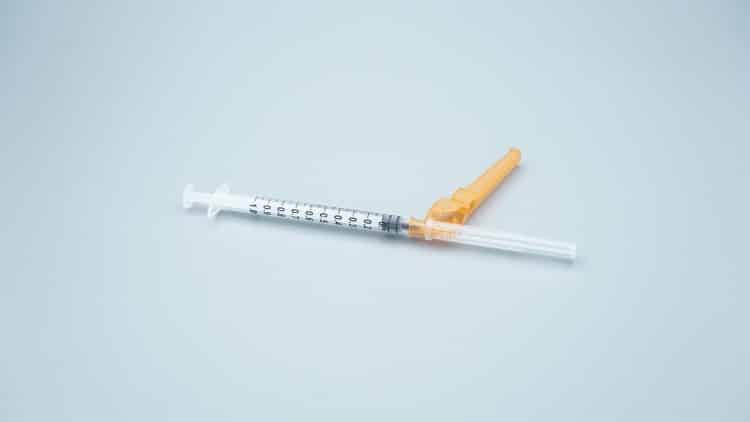
Regulatory Standards and Quality Control
International Regulatory Environment
The United States first passed the Needlestick Safety and Prevention Act (NSPA) in 2000, reducing sharps injury risks by increasing healthcare workers’ use of safe medical devices. However, currently only a few countries have implemented similar legislation, indicating that promoting safety syringes globally still requires more policy support.
China’s Regulatory Requirements
In China, the National Medical Products Administration (NMPA) implements strict registration management for medical devices such as disposable syringes. Related technical review guidelines clearly specify key technical requirements including product design requirements, performance indicators, and biological safety evaluations, ensuring product safety and effectiveness.
Quality Control Key Points
- Material Safety: Ensuring materials used meet biocompatibility requirements
- Functional Reliability: Safety mechanisms must activate reliably without failure
- Ease of Use: Safety design cannot interfere with normal injection operations
- Cost Control: Controlling manufacturing costs while ensuring safety
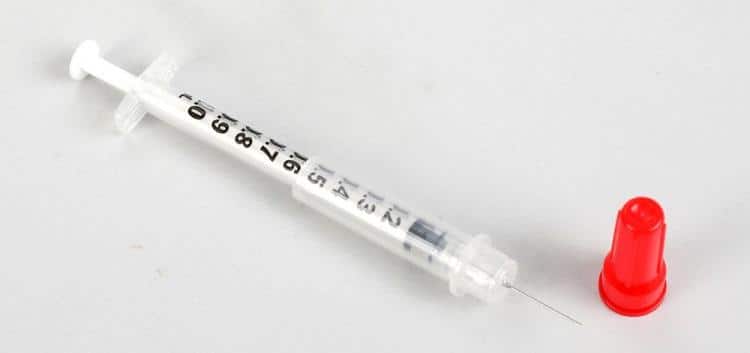
Clinical Application Effects and Value
Needlestick Injury Prevention Effects
Clinical studies show that using safety syringes can significantly reduce needlestick injury incidence rates. Some healthcare institutions have seen needlestick injury incidents decrease by over 70% after comprehensive promotion of safety syringes, substantially improving occupational safety levels for healthcare workers.
Infection Control Value
The use of disposable safety syringes effectively blocks transmission pathways for bloodborne diseases. Particularly in resource-limited healthcare environments, the promotion and use of safety syringes is significant for controlling nosocomial transmission of diseases such as hepatitis B, hepatitis C, and HIV.
Economic Benefit Analysis
Although safety syringes cost more per unit than traditional syringes, their overall economic benefits are significant:
- Reduced Medical Costs: Substantially reduces examination and treatment costs after needlestick injuries
- Lower Legal Risks: Reduces medical disputes and compensation due to needlestick injuries
- Improved Work Efficiency: Healthcare workers feel safer at work, improving work efficiency
- Reduced Personnel Loss: Prevents healthcare workers from leaving due to occupational exposure

Challenges and Development Opportunities
Main Challenges
- Cost Pressure: The price of safety syringes remains the main barrier to promotion
- Insufficient Awareness: Some healthcare institutions and workers lack adequate awareness of safety syringe importance
- Technical Standards: Technical standards for different types of safety syringes need unification
- Waste Disposal: Disposal of safety syringes requires specialized processes and equipment
Development Opportunities
- Policy Support: Governments increasingly prioritize healthcare safety, creating favorable policy environments
- Technological Progress: Application of new materials and processes reduces manufacturing costs
- Market Demand: Healthcare institutions’ demand for safety products continues to grow
- International Cooperation: Global health organizations promote widespread adoption of safety syringes
Future Development Trends
Technological Development Directions
- Smart Development: Integration with sensor technology for intelligent monitoring of injection processes
- Biodegradable Materials: Use of environmentally friendly materials to reduce environmental pollution
- Personalized Design: Development of specialized products for different departments and uses
- Cost Optimization: Reducing costs through technological innovation and large-scale production
Market Development Expectations
With increased global emphasis on healthcare safety, the safety syringe market will experience rapid growth. It is expected that within the next 5-10 years, safety syringes will gradually replace traditional syringes, becoming standard equipment in healthcare institutions.
Standardization Process
International standardization organizations and national regulatory agencies are strengthening cooperation to promote international unification of safety syringe technical standards, which will facilitate product quality improvement and international trade development.
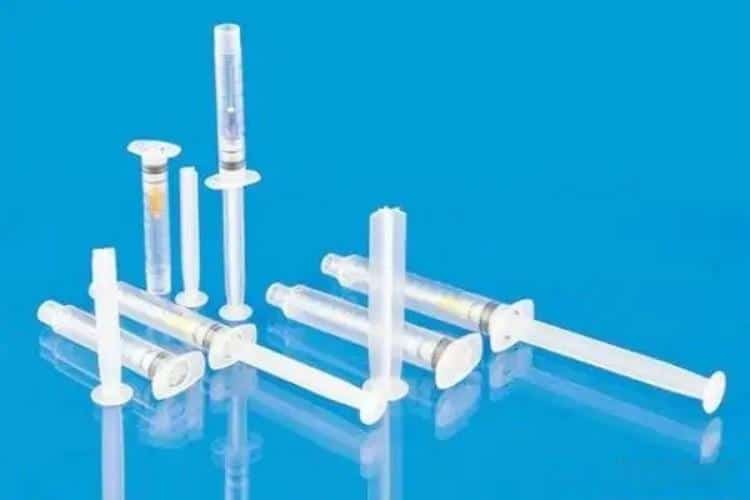
Conclusion
Disposable safety syringes, as an important innovation in healthcare safety technology, play an irreplaceable role in protecting healthcare worker occupational safety, preventing nosocomial infections, and improving healthcare service quality. Although some challenges remain in the promotion process, with continuous technological progress, sustained policy support, and enhanced market awareness, safety syringes will inevitably become standard equipment in modern healthcare systems.
For healthcare institutions, investing in safety syringes is not only protection for healthcare workers but also a commitment to patient safety and healthcare quality. For society as a whole, promoting the use of safety syringes is an important measure for building safe healthcare environments and ensuring public health safety.
In future development, we look forward to seeing more innovative technology applications, more comprehensive regulatory standards, and broader international cooperation to jointly promote continuous improvement in global healthcare safety levels. Only in this way can we truly achieve the goal of “safe injection, benefiting everyone” and contribute to building safer, more efficient healthcare systems.




